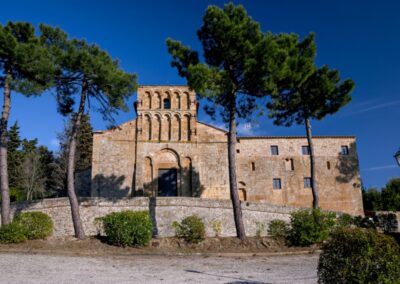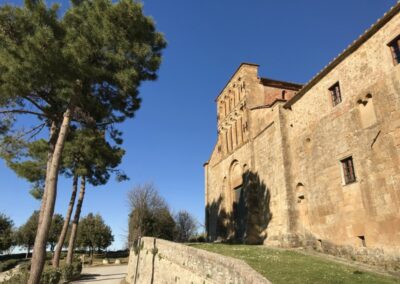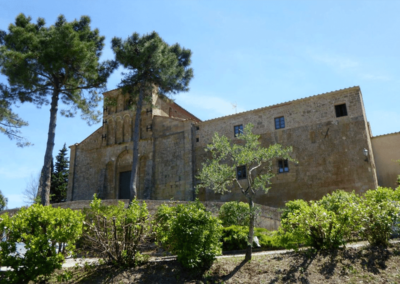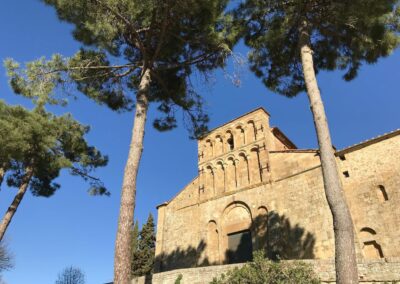Pieve di Santa Maria a Chianni
The symbol of Gambassi, the church of the pilgrims
Perhaps it is because of the sandstone that lights it up with ochre that the Pieve di Santa Maria in Chianni always seems sun-kissed.
Maybe it’s the pine trees that act as a curtain, maybe it’s the austere Romanesque score of the façade, the cleanliness of the blind, unadorned arches, or maybe it’s the road that passes further down and forces you to look at it from down to up.
In short, perhaps it is because of all this that Gambassi’s iconic parish church emerges as a solid monad on the stage in this corner of Tuscany.
It is a silent spectacle. The parish maintains a controlled elegance, typical of the Pisan Romanesque style that here is reinterpreted with the modesty of the means of a country parish. There are records of it from the late 10th century, when Sigeric – the most authoritative chronicler of the Via Francigena – reports its existence in his travelogue: Sancte Maria Glan, XX submansio.
The church as we know it today must be a later version, built at the same time as the foundation of Gambassi Castle around 1200. It is assumed that in 1224 it was not yet finished, since that same year the inhabitants of Gambassi were required to pay a tax to finance its completion.
Almost certainly masters from Volterra worked on it – the feudal subservience that bound Gambassi to the city of alabaster explains why – and we even know the name of one of them, Johannes Bundivulus, probably engraved by the master himself on one of the capitals inside the church.
And it is precisely on the capitals that our gaze falls: in the penumbra of the pieve, the severity of the lines, the monotony of the sandstone and the simplicity of the three-aisled space are interrupted by the variety of decorative, geometric and iconographic motifs at the base of the round arches. [the more observant observer will also notice that although the capitals leave room for the arches at the same height, between left and right rows, the columns supporting them are not symmetrical, those on the left resting on a rather high plinth, those on the right do not].
Nevertheless, the church is characterized by that sobriety typical of Romanesque art: indicative of this is the use of single-lancet, narrow windows, from which very little light filters. Entering in summer, one has the feeling of being in the dark, the eyes need time to adjust while the atmosphere calls for recollection.




